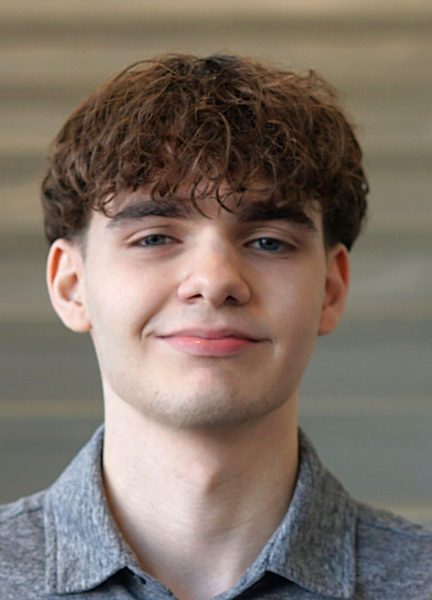Movie Review: ‘Godzilla: King of the Monsters’
“Godzilla: King of the Monsters” follows the exploits of Monarch, an organization dedicated to studying kaiju monsters. When a rogue crew unleashes the ancient kaiju, Monarch attempts to handle the situation. Eventually, the creatures attack humanity, and the body count continually grows. But of course, this battle will not be won by humans. It will be won by Godzilla.
To say that “King of the Monsters” was one of my most anticipated movies of this year would be a massive understatement. I adore monster movies, and I am a big fan of Gareth Edwards’ previous Godzilla film. Michael Dougherty, an experienced director of monsters, directed this kaiju sequel. In the past, Dougherty has directed “Trick R’ Treat,” a modern Halloween classic, and “Krampus,” a Christmas tale that successfully mixes horror and comedy. From a logical point of view, Dougherty is an ideal candidate for the kaiju world. Sadly, this kaiju sequel is a disappointing entry in the Godzilla series.
The biggest problem with this film is the script. If you want a monster film that features logical, naturally developed characters…you’re out of luck. Many people have said that “King of the Monsters” is a roller coaster ride. I will agree with the theme park comparison. For me, the film is a roller coaster ride that constantly comes to a standstill. Sure, there are some neat twists and turns, but as a full ride, the cinematic characters turn the film into a defective blockbuster.
Dougherty has a wonderful cast, but unfortunately, the subpar script drastically limits the ensemble cast’s talent. Simply put, it’s horrifically remarkable that such a terrific cast can be wasted so badly. The actors give it their all, but a poorly constructed story can only go so far. Vera Farmiga, a modern queen of horror, portrays an irritatingly naive character, whose foolishness knows no bounds. Millie Bobbie Brown, an immensely popular up-and-comer, plays a simple teenager. Brown displays believable bits of emotion. However, her character isn’t given much to do until the third act.
Charles Dance portrays a run-of-the-mill villain, who desperately wants to unleash the kaiju. Dance’s death stare creates a visibly threatening antagonist, but from an emotional standpoint, this foe is legitimately hollow. Bradley Whitford plays an experienced Monarch associate, brimful of humor. On occasion, Whitford, an effectively humorous performer, creates comically clever moments, but in general, his character’s antics feel forced. In a world full of death, why would such an intellectual character joke so much?
Kyle Chandler portrays a bound and determined father, fighting past demons. Chandler’s energy is on full display, but not even he can transform this humdrum character. Ken Watanabe, a standout from the previous kaiju film, plays Dr. Serizawa. As always, Watanabe brings a ton of passion and gravitas to his cinematic persona. And overall, I actually enjoyed his character’s arc.
Throughout the film, Dougherty puts a lot of focus toward the monsters. The film is purposefully up-close with these monsters, and other times, there are elegantly shot sequences that focus on human perspectives. These human scenes, while visually admirable, don’t work, because the characters are cardboard cutouts. Often times, the characters are expository forms of expression. On a consistent basis, we receive a ton of expository dialogue that feels monotonous.
Clearly, Dougherty is a massive Godzilla fan. Listen closely, and you will hear iconic pieces of kaiju music. Look closely, and you will realize that every monster has a unique personality. Look even closer, and you will find hidden clues, meant to excite hardcore fans. From a visual standpoint, the monsters look phenomenal. The film has taken every physical detail very seriously. In many ways, Dougherty treats these creatures like beautiful yet terrifying gods, roaming the earth with reckless abandon. During monster brawls, there are stunning moments that echo the fascinating mythology of kaiju creatures.
In Dougherty’s film, there are many monsters (not just Godzilla, King Ghidorah, Mothra and Rodan). Sure, it’s neat to witness the unique physicality of different monsters, but as time goes on, the monstrous awe that we felt in the 2014 film begins to wear out. In the previous Godzilla film, director Gareth Edwards gradually focused on the kaiju. They were rare creatures that eliminated humanity’s preconceived notions of nature. Whenever we saw the creatures’ powers, it felt truly magical and unprecedented. In this sequel, due to the high number of monsters, the main kaiju feel less precious. The feeling of rareness is gone, and in turn, the monsters become somewhat ordinary.
When the film focuses on monster brawls, there is a grand feeling of energy and largeness. But unfortunately, Dougherty doesn’t let the fight sequences naturally progress. Fights transpire, but the rhythm of these conflicts are ruined by unnecessary cutting. Often times, it feels like the film is shying away from logical forms of spectacle and progression. When it comes to monster mythology, these creatures (Godzilla, King Ghidorah, Mothra, and Rodan) are the best of the best. They are the Tom Brady, Jerry Rice, Jim Brown, and Lawrence Taylor of the monster world. Sadly, these graceful creatures are not utilized to the best of their potential. Yes, they are exploited, but not nearly enough. As a result, the primary monsters fail to achieve a newly formed sense of awe and wonder.
Dougherty’s film has monster action, but oddly enough, the photography and color palette are extremely repetitive. For some reason, in this film, there appears to be a rule stating that monster brawls have to take place in dark, depressing environments. Oh, and also…these fights have to be accompanied by rain or snow. If one fight takes place in a dark environment, featuring chaotic weather patterns, that is fine. But from a visual perspective, why does every fight have to feel the same? These creatures are larger than life. In terms of photography and color palette, every fight should have a fresh sense of gladiatorial atmosphere and vibrancy.
In conclusion, I believe that many viewers will enjoy the film. I don’t regret seeing it. As a Godzilla fan, I was intrigued by the nostalgic callbacks. Unfortunately, I think about how much better the film could have been. “King of the Monsters” isn’t a bad film. Quite frankly, it’s an okay flick. I recommend that you see the picture for yourself. Form your own opinion. And from the bottom of my heart…I hope that you love this kaiju flick!
My Grade: C
Dillon McCarty can be contacted at [email protected].
Your donation will help continue the work of independent student journalism at Marshall University. If you benefit from The Parthenon's free content, please consider making a donation.






